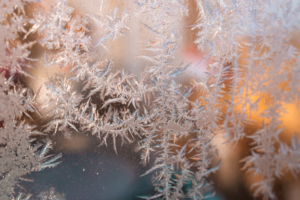This summer you may see many different insects flying and landing in your garden, in your patio planter or in your window box. Those insects that are searching for nectar and pollen are pollinators, helping the flower to reproduce by spreading pollen from bloom to bloom. While there are over 450 different pollinator species in New York, I thought it would be fun to get to know just a few of our pollinator friends and highlight some interesting characteristics. As you read through, maybe you will self-identify with one!
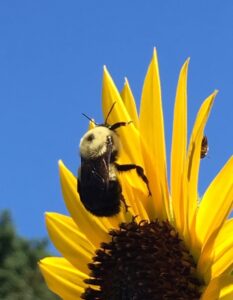
Bumble Bees
- 3 Characteristics: Furry, Innovative, See UV colors
- Some of their favorite plants: pussy willow, mountain mint, New England aster
Bumble bees appear furry as they are covered in soft little hairs that help to insulate them and help pollen stick to their bodies. They have complex navigational skills and are good at learning the most efficient way to obtain pollen from a particular flower. Bumble bees nest in cavities, with a special preference for nesting in existing, underground fur-lined rodent holes.
The bees are generalist and forage for a wide variety of pollen and nectar sources. They prefer flowers that are not red as they cannot see red and it appears dark to them. However, they can see the UV color spectrum, which allows them to see secret patterns on flowers, like landing zones, showing where the pollen and nectar is hidden.
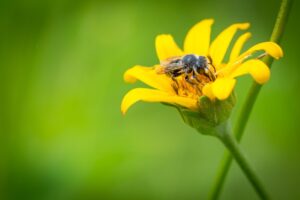
Leaf Cutter Bees
- 3 Characteristics: Architect, Love to chew, Effective pollinator
- Some of their favorite plants: eastern redbud, purple coneflower, false sunflower
Leaf cutter bees have huge mandibles that they use to cut into leaves and petals, re-purposing them as blankets to line their nests. The females are all architects, creating separate rooms or chambers in existing tubular cavities, such as hollow stems or empty tunnels made by beetles. The chambers house her eggs, with walls made of chewed leaves and resin.
Leaf cutter bees are some of the most effective pollinators, as they carry pollen underneath their bodies, distributing the pollen effectively from flower to flower.
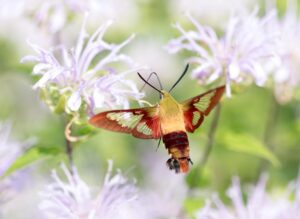
Hawk moths
- 3 Characteristics: Stealth, night owl, likes to go fast
- Some of their favorite plants: beardtongue, Virginia creeper, wild bergamot
Hawk moths are also known as hummingbird moths, and are one of our most incredibly unique pollinators, sometimes mistaken for small birds. They have camouflage coloration, fly fast, and generally like to fly at night. They have extremely long tongues and are attracted to white or light-colored flowers that are tube-shaped in which they can easily extract nectar from the flower’s base. Hawk moth caterpillars like to eat leaves of plants in the grape family such as the native wild grape vine, Virginia creeper, and the highly invasive porcelain berry.
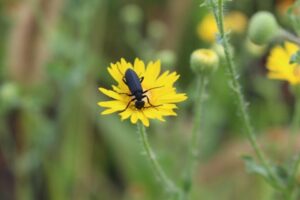
Beetles
- 3 Characteristics: Old soul, entrepreneurial, tough
- Some of their favorite plants: goldenrod, spicebush, magnolia
Beetles were the very first insects to visit flowers 100 million years ago, before there were bees and butterflies. They get the credit for starting the animal-flower pollinator relationship that has since evolved over millions of years. They therefore prefer older plant species like magnolia or spicebush. Beetles have tough, solid bodies protected by an exoskeleton. They prefer heavy-scented flowers and will chew through flower petals to get to the nectar. This makes them not very effective pollinators, but no matter, as their everlasting legacy lives on as the founders of pollination.
So which pollinator are you? Are you a hawk moth? A busy bumble bee? An old, wise soul of a beetle? A leaf cutter bee that loves to eat and build things? Whomever is your “spirit pollinator” I invite you to check out the Westchester Pollinator Garden Tour, hosted by Healthy Yards on Sunday, July 24, from 10-4 to see many more pollinators. Hope to see you there.
Amanda Bayley is the CEO & Co-Founder of Plan it Wild, a sustainable land management company that is bringing back native habitats to Westchester yards.
More Nature. Now. www.PLANitWILD.com





